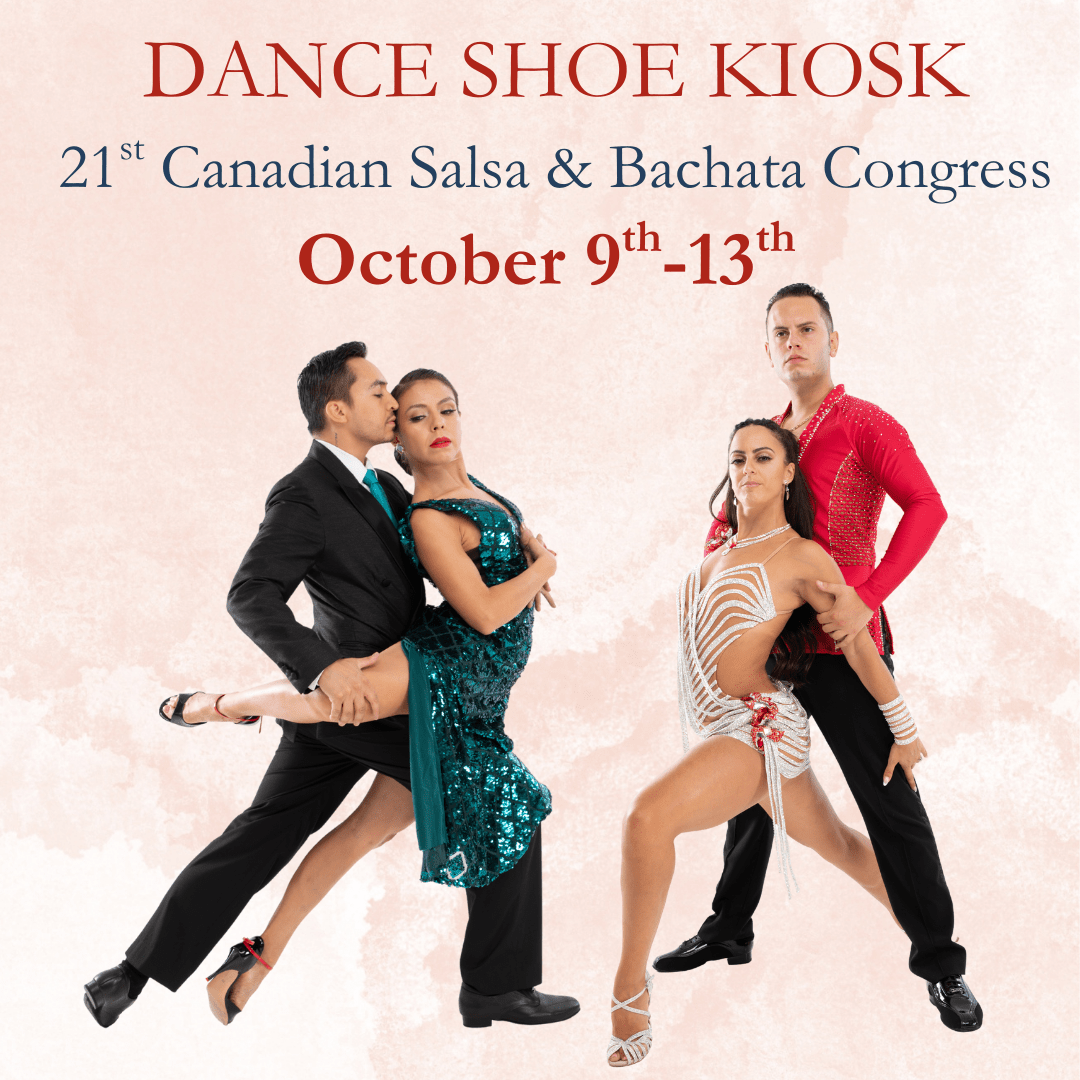Jacques D’Amboise, American danseur and choreographer for the New York City Ballet once said: “Dance is your pulse, your heartbeat, your breathing. It’s the rhythm of your life. It's the expression in time and movement, in happiness, joy, sadness and envy.”
So it is. Dance is a passion. Some compete. Some perform. Some teach. Some dance socially. Some do it all. But once you start, no matter which route you take, the dance takes over. It becomes more than just a hobby and the phrase “I can’t, I have dance” becomes a regular part of your vocabulary (1). In the video below, professional dancers talk about their love for dancing and how they came to it.
Ballroom dancing is something I discovered a few years ago. It had been years since I’d danced (2) and I missed it. So I ended up walking in through the doors Arthur Murray West Island (Montreal), what is now my home-away-from-home (3), and, well, the rest is history. Since I started this journey, I cannot imagine my life without the dance or the people I’ve met through it (you know who you are). It is something I feel I was born to do and I love challenging myself to be the best I can be. It gives me life. I am a studio mouse (4).
You could say I live to dance. But did you know, you can dance to live? Longer, better, healthier, happier (5). Aside from the obvious weight loss and muscle toning that dancers notice, there are marked improvements in cardiovascular health markers (6). Furthermore there is also a growing number of medical studies that illustrate the effectiveness of complementary dance therapy for treating depression, Parkinson’s, mild cognitive impairment (7), and Down Syndrome.
The studies I read regarding Parkinson’s used Argentine Tango as their dance of choice and featured randomized controlled trials (8). One study (Foster, 2013) took place in the Washington-St.Louis area in the U.S. in association with the Washington University School of Medicine. The other study (Romenets, 2015) was conducted in association with McGill University. In both cases the control groups continued with their usual exercise regime recommended to them as part of their treatment. The intervention group was assigned partnered tango lessons; partners were usually healthy friends and spouses. According to the research, exercise has been found beneficial to patients with Parkinson’s because it improves “physical function, mobility, cognition, and health-related quality of life” (9). The specific advantages of progressive Argentine Tango classes showed “larger improvements in balance, mobility, movement initiation, and attention to movement control” (10). Furthermore, many participants in the study chose to continue with the dance classes and some members of the control group began to take the classes once the study had closed. Another study revealed improvements in balance, cognition, and fatigue (11), as well as mood. In both cases, the control group showed no comparative improvement and in some cases, an actual decline.
Argentine Tango has also been examined as complementary therapy for depression (Pinniger, 2012) and showed positive results, though further study was called for to determine the actual mechanisms necessary. The study showed a decrease in depression in tango participants relative to the waiting-list controls, as well as a decrease in levels of stress (12).
Another study which was conducted in Greece (Lazarou, 2017) used international ballroom dancing as therapy for Greek Community-dwelling elders (aged 55 to 75) with mild cognitive impairment. Participants received hour-long dance classes twice a week for 10 months, under the supervision of a trained dance instructor. They learned Waltz, Tango, Foxtrot, Viennese Waltz, Rumba, Chacha, Swing, etc. Each lesson was composed of three dances, in rotation. The figures presented grew in complexity as the course went on. Most participants in the course showed significant improvements in global cognition, short and long-term memory, and mood (13). In this last case, “anxiety and depressive symptoms were significantly decreased” (14).
And these are just some of the findings. Dancing is a passion that sets new challenges for your body and mind and can allow you to live an independent, healthy life for longer. Try it. You’ll see.
So grab your shoes.
I’ll see you on the floor.
(1) True story. Do not come between me and my dancing.
(2) I did ballet up until the age of 14. In ballroom dancing, I now have what I refer to as “ballerina problems”. Soft knees? Cuban motion? Don’t go all the way up on your toes? Whoops :)
(3) Seriously. I feel I should install a cot so I can just sleep there…I haven’t discussed this with anyone yet, though, so…
(4) It’s also my life’s goal to get everyone I know through those doors. I’m working on it. Give me time.
(5) And yes, with a whole lot more sparkle and bounce than you did before.
(6) Heid.
(7) MCI can be a precursor to Alzheimer’s and dementia.
(8) A randomized controlled trial is a study in which people are randomly selected to receive one of several clinical interventions. One of these interventions is the “control group”. The control may be a standard practice, a placebo ("sugar pill"), or no intervention at all. The other group receives the new treatment. See Foster and Romenets below for the specific studies.
(9) Foster, 2.
(10) Foster, 3.
(11) Romenets, 179. Argentine Tango is also thought to be particularly useful because its steps a rhythmic backwards/forwards motion, so it “may be particularly useful for freezing gait, and prevention of falls in the backwards direction”.
(12) Pinniger.
(13) Lazarou, 493.
(14) Lazarou, 495.
References & Recommended Reading
Foster, Erin R., et al. “A Community-Based Argentine Tango Dance Program Is Associated With Increased Activity Participation Among Individuals With Parkinson Disease.” Archives of Physical Medicine and Rehabiliation (2013) 94(2): 240-249. DOI: 10.1016/j.apmr.2012.07.028
Heid, Markham. “Why Dancing Is the Best Thing You Can Do For Your Body.” Time Magazine. http://time.com/4828793/dancing-dance-aerobic-exercise
Lazarou, Ioulietta, et al. “International Ballroom Dancing Against Neurodegeneration: A Randomized Controlled Trial in Greek Cimmunity-Dwelling Elders With Mild Cognitive Impairement.” American Journal of Alzheimer’s Disease and Other Dementias (2017) 32(8): 489-499. DOI: 10.1177/1533317517725813
“Neuroscientists Finally Revealed the Number One Exercise For Slowing Down the Aging Process.” Curious Mind Magazine. https://curiousmindmagazine.com/neuroscientists-finally-revealed-number-one-exercise-slowing-aging-process/
Pinniger, R., et al. “Argentine Tango Dance Compared to Mindfulness Meditation and a Waiting-list Control: A Randomised Trial for Treating Depression.” Complementary Therapies in Medecine. (2012) 20(6): 377-84. DOI: 10.1016/j.ctim.2012.07.003
Ptomey, Lauren T, et al. “Changes in Cognitive Function After a 12-week exercise Intervention in Adults With Down Syndrome.” Disability and Health Journal (2018). DOI: https://doi.org/10.1016/j.dhjo.2018.02.003
Romenets, Silvia Rios, et al. “Tango For Treatment of Motor and Non-Motor Manifestations in Parkinson’s Disease: A Randomized Control Study.” Complementary Therapies in Medicine (2015) 23: 175-184. DOI: http://dx.doi.org/10.1016/j.ctim.2015.01.015




